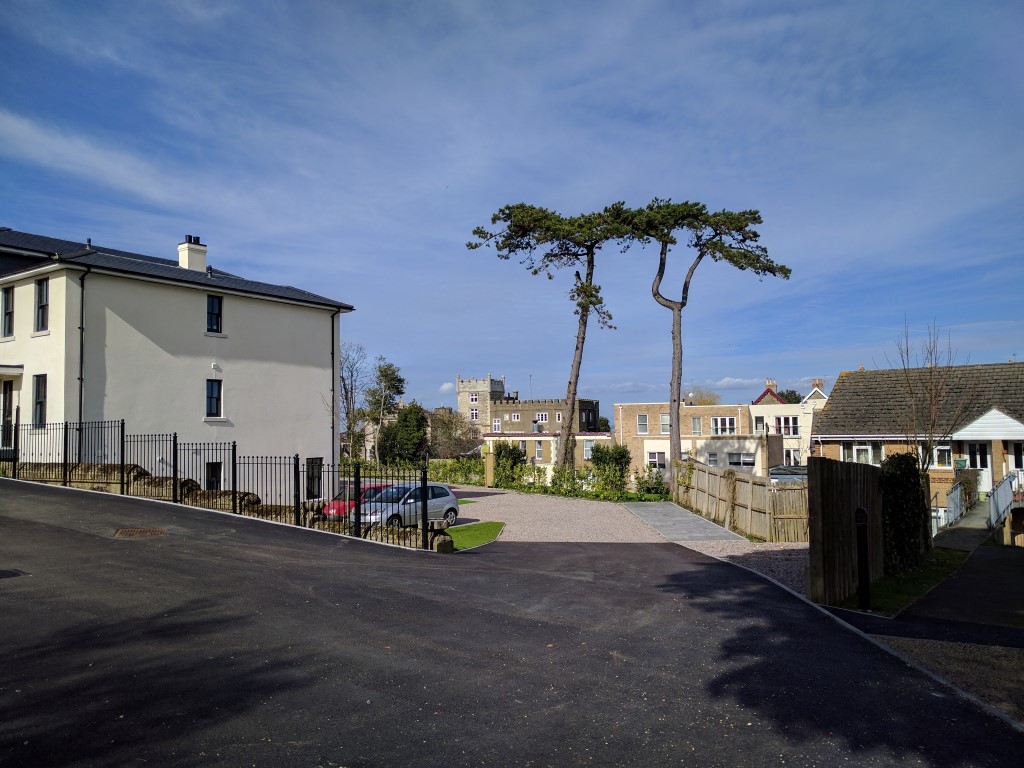The Shoeffiti artists of North America
- Complaining about the Mainland - 17th August, 2024
- New island designation – is it just greenwash? - 26th April, 2024
- Police and Crime Commissioners – a solution or a problem? - 21st April, 2024
Trees attract rituals. People seem to find meaning in trees perhaps for their permanence, their size or simply their beauty. We often feel the need to mark this by some act. But here’s one that, if you’re on this side of the water, you probably won’t know about. But I suspect that US and Canadian readers will by contrast say “Huh? Doesn’t everyone do this?”.

A chance photo seen on the evergreen UKTC forum showed a Canadian tree covered in shoes. And what appeared to be a one-off phenomenon turned out to be something that happens all across the US and Canada, and apparently beyond – although hardly at all in Europe. Like many of the more interesting aspects of the interaction between trees and humans, it seems there’s more to this shoe and tree business than meets the eye. Wikipedia, a mine of information of dubious provenance about North American cultural trivia, does not let us down when it comes to the wider phenomenon of “Shoe tossing“. This embraces the idea of shoes on power lines and other structures, as well as trees. But what’s it all about? Why do Americans throw their shoes over power lines and nail them to trees?

Oddly enough, and perhaps reassuringly, nobody really seems to know. Wikipedia reports the usual ragbag of urban myths which reflexively accrete around unregulated and unexplained phenomena: shoes on wires refer to crack smoking; advertise heroin dealing; mark the end of a school term; demarcate gang territory; even “It has been reported that workmen often throw shoes if they are not paid for waxing floors”. Yes, friends, waxing floors. If that’s the true explanation then there are an awful lot of barefoot ex-floor-waxers in North America. One common feature of the shoe tree (as opposed to the shoes on wires) which more-or-less rules out all the above specious explanations, is that shoe trees seem to sprout in remote locations, albeit usually adjacent to a highway. They sometimes seem to take on a role as an attraction in themselves. In fact, shoes on trees seems to be a rather different phenomenon to the power-line variety. It has the feeling of a more pagan, ritualistic tree-dressing; perhaps associated with a journey into the wilderness to find the tree. Common Ground tells us:
In different parts of Britain, Ireland and northern Europe, there is a tradition of fastening rags to trees (usually hawthorn) near holy wells. After taking the water people tie a piece of their clothing to the tree. The tree is a symbol of long life and health. In Scotland these are known as clootie (cloth) trees. The Gentleman’s Magazine of 1823 shows this to be an ancient custom in England even then … ‘St Oswald’s Well has a peculiar charm … if a shirt is taken off a sick person and then thrown into this well, it will show whether the person so sick, will recover or die. If it floats it denotes recovery .. to reward the saint they tear off a rag of the shirt and leave it hanging on the briars thereabouts.’ ‘where‘ says the writer, ‘I have seen such numbers as might have made a fayre ream in a paper myll.‘ In Ireland, according to Janet and Colin Bord (1983) ‘there are about sixty holy wells in Co. Carlow and at each of them is an ancient skeough (Whitethorn Bush). On these bushes, pilgrims to the wells were in the habit of hanging … strips of cloth (also beads/rosaries etc) in acknowledgement of cures obtained there.‘ There are over 3,000 holy wells/trees in Ireland.
Supporting this theory is the tendency of some shoe-leavers to leave a message with their erstwhile footwear.

This older, gentler, explanation seems to fit more comfortably than the floor-waxers and dope-dealers. Leaving the urban power-lines to those harsher creatures, it’s probably not unreasonable to suggest that the shoe trees of North America are the cultural descendants of the ‘clootie trees’ of Britain and similar traditions elsewhere.


This is so strange. I just started doing this research about all this shoes on the trees.
The reason is that I’ve seen shoes on the trees and wires for 2 years already. The most interesting this is I’ve seen it in South Carolina, Georgia, Washington State where I live right now. In Washington state I’ve seen it in different towns and one near my house. Most of these shoes are blure tennis shoes. This is so weird. I really want to know more about it and the reason under it.
Thank you for your interesting article!!!
aha – the only one I’d ever seen was the Heaton Park Shoe Tree in Newcastle-upon-Tyne, how nice to know it’s a global phenomenon